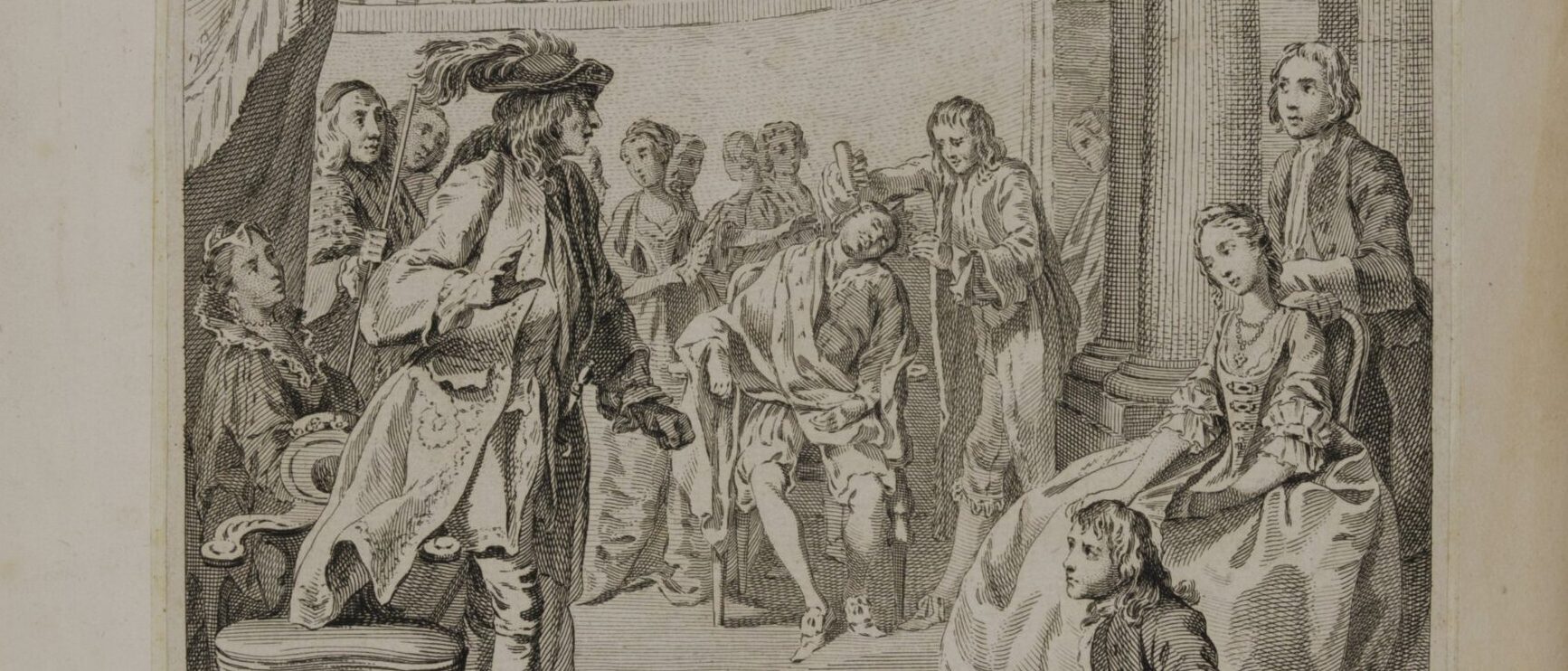Introduction
One of the most powerful and iconic moments from Shakespeare’s Hamlet is when Queen Gertrude announces, and then describes, the death of Ophelia.
While powerful, this moment can also be challenging to apprehend or even to take seriously. Why? Because in many ways, this speech represents what is both most appealing and most strange about Shakespeare’s theatre. It is a prominent example of reported action, where a pivotal event in the play is described to us rather than presented. This almost never happens in the more naturalistic media of film and television. It is richly written verse, perhaps ornamented “wildly” as Ophelia herself, and beneath its description we might be aware of both the Elizabethan passion for rhetorical “flowers,” as well as the pastoral tradition that sees poetry and nature as having a deep and ancient bond. It is also a moment of both feminine despair and special feminine power. Despair because, so it seems, Ophelia is a casualty of the spiraling violence that will soon consume all the play’s major characters, and is apparently unable to manage the twin blows of Hamlet’s rejection and her father’s murder. Various characters consider afterward whether she is to blame for her death, and leaves the matter, to use the unnamed priest’s word, “doubtful” (5.1.227). But it is also a moment of feminine power, because it is Gertrude who shapes this unforgettable passage, and for the moment arrests the machinations of vengeance being prepared by her husband and Laertes.
What are some of the resources available at the Newberry Library to open up and explore the simultaneous challenges to, and powers of, such a moment? In this digital collection, we will take two primary paths. One is the textual history of Shakespeare. As with so much else, such history is easy to access in this day and age, when considered as information. It is not difficult to learn what choices between varying and conflicting Shakespeare texts editors have made over the centuries, or what pieces of context editors and commentators have seen as most important to understanding a given passage. But at the Newberry, we can examine and handle these versions of Shakespeare ourselves.
There is something remarkable about this opportunity. Though he was working long before the advent of the internet and the digital age, the German-Jewish thinker Walter Benjamin (1892–1940) wrote one of the most profound meditations on what happens when one encounters archival objects. Benjamin’s famous essay, “The Work of Art in the Age of Mechanical Reproduction,” explores the concept of “aura,” the special quality that resists reproduction and that inheres in the thing itself. This quality might be a natural sublimity in a landscape, partially captured in a landscape painting, or the presence of an actor in a theatre, that resists being captured by camera or video. Archival materials also have this quality, whether it is what Benjamin calls “the testimony to the history which it has experienced” that is visible in subtle details—paper, ink, binding, marks of prior owners—or other arresting and alienating effects of objects from the nearer or more distant past. So despite this being a digital collection of archival materials from the Newberry’s collections, the collection is particularly interested in the effects of handling these materials and encountering them “in the flesh.”
Essential Questions:
- How is our sense of a Shakespeare passage changed by examining editions from previous centuries?
- What clues to the meaning and emotional impact of a passage or character are contained in these editions?
- Ben Jonson once claimed that Shakespeare was “for all time”: in other words, a timeless icon of genius. To what extent does spending time with these editions reverse this claim, and instead help us understand how “Shakespeare” has been molded to the interests and sensibilities of many times?
- How is our sense Gertrude’s speech, and our sense of Ophelia’s death, changed by placing it in more distant contexts afforded by the Collection, specifically thinking of her death as a metamorphosis?
Let the Editing Begin
Selection: Rowe’s Edition, Tittle page, Title page of Hamlet with illustration, Gertrude’s speech (1709)
There are no fully authorized texts of any of Shakespeare’s plays: no manuscripts in his hand, no printed editions definitively tied to his oversight. And so when, in the eighteenth century, when what we now understand as the English literary “canon” began to form, and Shakespeare began to be revered as England’s national author, a series of editors began to take on the task of stabilizing and authorizing the texts of Shakespeare’s plays. It was a wild time, with editors not necessarily using consistent or scientific methods, and often “emending” (making corrections to or improving) the text of the plays if the editor suspected the text to be “corrupt,” or if, in the editor’s estimation, it simply didn’t make sense. It was also a time when the market for Shakespeare was growing. Alexander Pope (1688-1744) is now known mostly for his erudite satirical poetry, but he made a living from publishing translations of Homer, and from an edition of Shakespeare that took more liberties than even his contemporaries could bear. However, the list of subscribers below shows the extent to which the rich and powerful wished to be associated with an edition of Shakespeare created by the foremost poet of the age.
Selection: Alexander Pope’s Edition, title page and first page of Hamlet (1723).
The edition of William Warburton (1698-1779) also became famous for its aggressive editing, but in the case of Gertrude’s speech, Warburton found little cause for intervention, except with the inclusion of a note about a satiric response to the speech (on page 240). But this is interesting: does Warburton hint that this speech was hard to take seriously? Another interesting feature of this edition is the quotation marks around parts of Gertrude’s speech, indicators of a passage the might be worth copying out into a journal or “commonplace” book.
Selection: Warburton’s Edition, Gertrude’s Speech (1747)
By the nineteenth century there were so many editions that a special code was developed so that textual choices and their origins could be indicated in a compressed and consistent form. H. H. Furness’s edition is the first Shakespeare “Variorum,” which attempts to supply, mostly in footnotes, all of the most significant comments, suggested corrections and emendations, for every line of every play. Such editions established the serious and “scholarly” approach to Shakespeare editing that persists in such editions as the Arden Shakespeare and others. But less attention has been paid to the aesthetics of packaging the text in this way, even as no one questions the powerful effects on audience experience and interpretation provoked by different performance approaches. Examining these editions raises the question of the extent to which the editing and packaging of Shakespeare has functioned as a “performance” to a greater extent than usually considered.
Questions to consider:
- Rowe’s edition of 1709 is the earliest “complete” Shakespeare edition. What is the effect of seeing signatures of previous owners from 1776 and 1796?
- What kinds of analytic possibilities are opened by Warburton’s suggestion, in his note, that Gertrude’s speech might be hard to take seriously?
- How does it change the way we read the speech to see indications that it is particularly famous or worthy of memorization?
- With Pope, does the text still seem luxurious today? Fit for a king to read? What are some of the aspects of the book design that seem to indicate this?
- What effect does it have on Gertrude’s speech to see it surrounded by the notes and commentary of the Variorum edition?
The Folio, and Ghosts
The closest we can get to the moment of Shakespeare writing his plays, or rehearsing the death of Ophelia speech for the first time, are the quarto and folio texts that form the extremely complex textual origins of this play. And at the Newberry, for this, and for most Shakespeare plays, the obvious place to start is with the Folio of 1623.
Selection: Folio of 1623, Gertrude’s Speech.
Many people, even those with only a modest interest in Shakespeare, tend to find being in the presence of one of these books an exciting and memorable experience. This is despite the fact that the book does not seem as reverent or well-produced as later editions. In an ordinary page of text, compared to the spacious presentation of Pope’s edition, we might find things to be rather busy and congested on the page. But perhaps this is part of its power, its strangeness. Looking closely at the lettering and lines separating columns one sees places where the ink is thicker, signs that seem to tell of what we know to be the case: Elizabethan printing was on a much smaller scale, and books were error-checked and corrected during their printing. The light but durable paper has visible fibers, especially light red ones. The effect is of an “artisanal” production, something that displays a technique of reproduction that seems evidently the very opposite of “modern.” And oddly it is perhaps just the historical distance, and strangeness, that seems to bring us closer to the people who directed the production of this book.
Selection: The Quarto of 1611
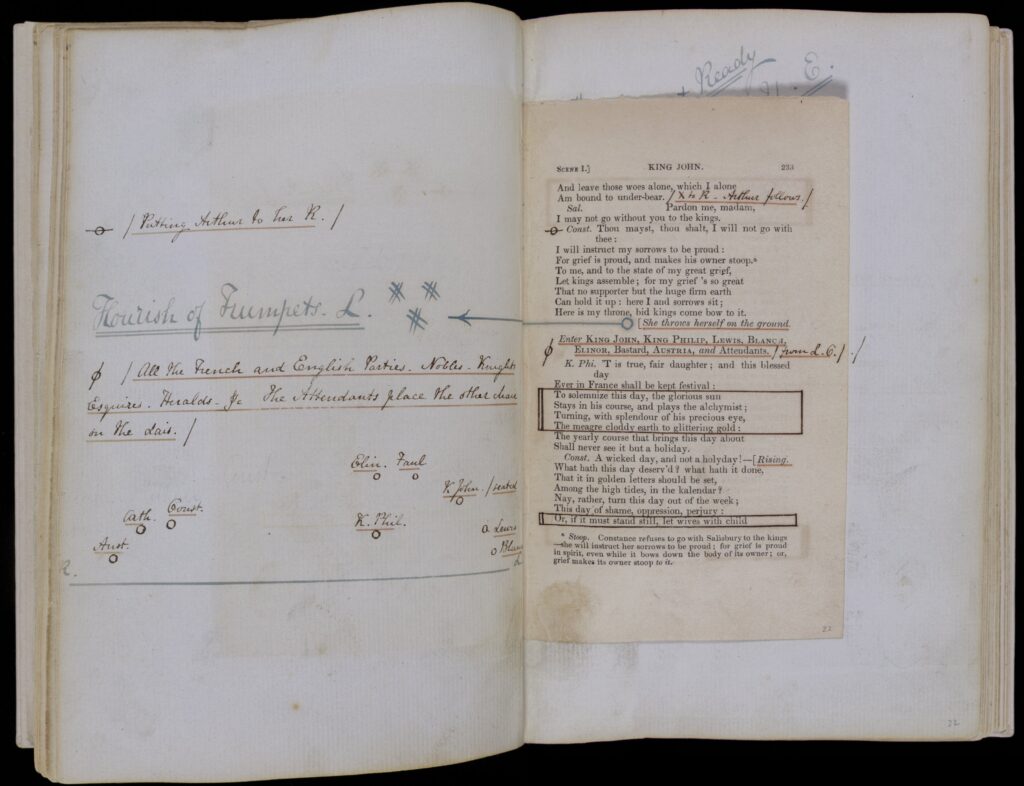
If one has paid careful attention to the passage, there are also some differences that are striking, especially at the end, where Ophelia’s garments are “heavy with her drinke,” not “their” drink, and her “melodious lay” is replaced with “melodious buy.” As well, the capitalization and punctuation, along with the spelling and lettering of “s” in particular, all cast a further sense of strangeness. If we look at the quarto of 1611, the third such edition printed in Shakespeare’s lifetime but not, as far as we know, under his supervision, we find here a reproduction with a more recent but still antiquated technique, from early in the twentieth century, rendering the text in ghostly white letters, and adding an additional layer of strangeness. But the text itself is much closer to our modern expectations, and the language at the end conforms to what most editors, from Rowe onward, have embraced, contra the Folio. And the Newberry does have examples of the kind of theatrical texts that we would long to see, as in the prompt copy from a production in London’s Drury Lane Theatre in the mid-nineteenth century, complete with stage positions, sound effects, and innumerable other details of performance that are so lacking in the text as it has come down to us from Shakespeare’s time. It may serve here to highlight all that we continue not to know about Shakespeare’s stage.
Questions to consider:
- What does it do to our understanding of Shakespeare to examine texts that display subtle and not-so-subtle differences in wording, spelling and punctuation?
- The eighteenth-century editions of Shakespeare in the previous section seem sometimes to flatter the tastes and expectations of the readers of their time. Do the folio and quarto editions from Shakespeare’s age do this as well? If so, how, or if not, why?
- What kinds of differences in the use of books and their place in culture might be visible from comparing Shakespeare texts from the seventeenth, eighteenth, and nineteenth centuries?
Ophelia Metamorphosed: European Precursors and Descendants
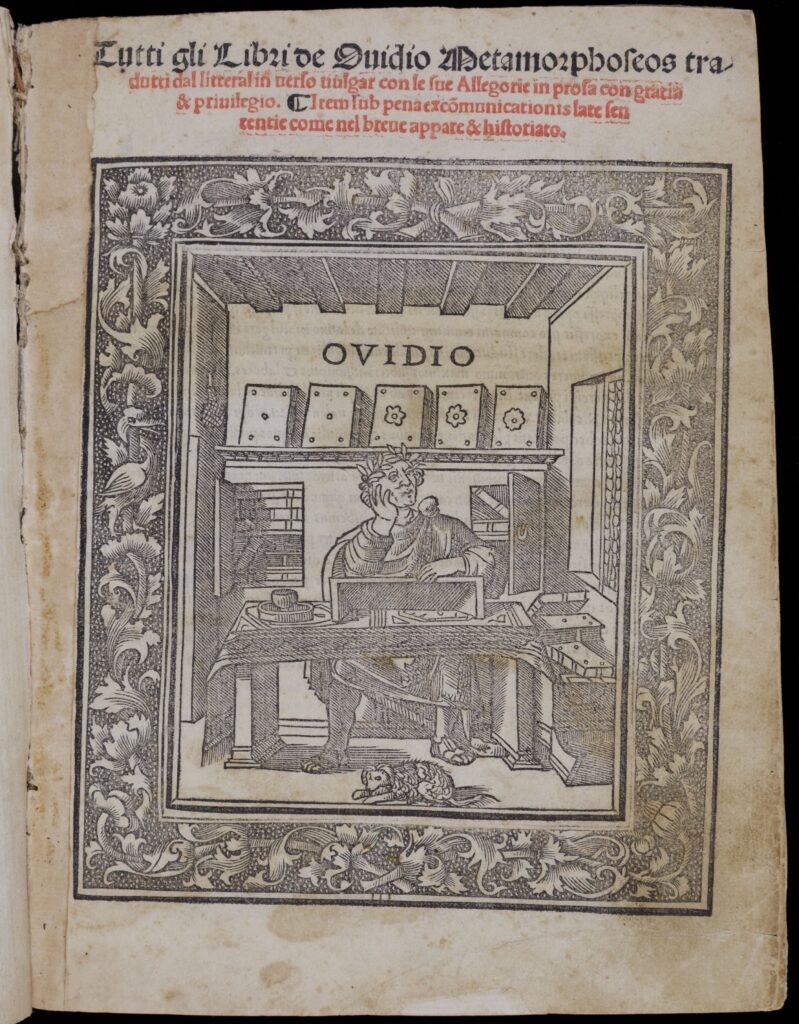
In the last section, we take a few more possible paths into the archive to expand the context and interpretive possibilities for Ophelia’s death. One is to the Roman poet Ovid (43 BCE–17/18 CE), who is most famous for his collection of myths in continuous narrative verse entitled The Metamorphoses. This book is among the most persistent influences on Shakespeare’s imagination, not surprising considering its centrality in the Elizabethan grammar school curriculum and in European culture. One possible context for Ophelia’s death are the fates of various maidens in this book. For instance, Ovid’s text features the nymph Daphne who in requesting protection from the pursuit of Apollo, was transformed into a laurel bush, and Syrinx, who escaped Pan by being transformed into reeds. One notes that these transformations “save” these young women in peculiar ways, and although they do not die, they are “indued” (by taking on a different form, thus “adapted”) to natural elements with a permanence that might as well be death. An Italian translation from the sixteenth century indicates the ongoing European fascination in these stories, and gives us an illustration of the metamorphosis scene of Daphne that anticipates Bernini’s celebrated sculpture of the same moment.

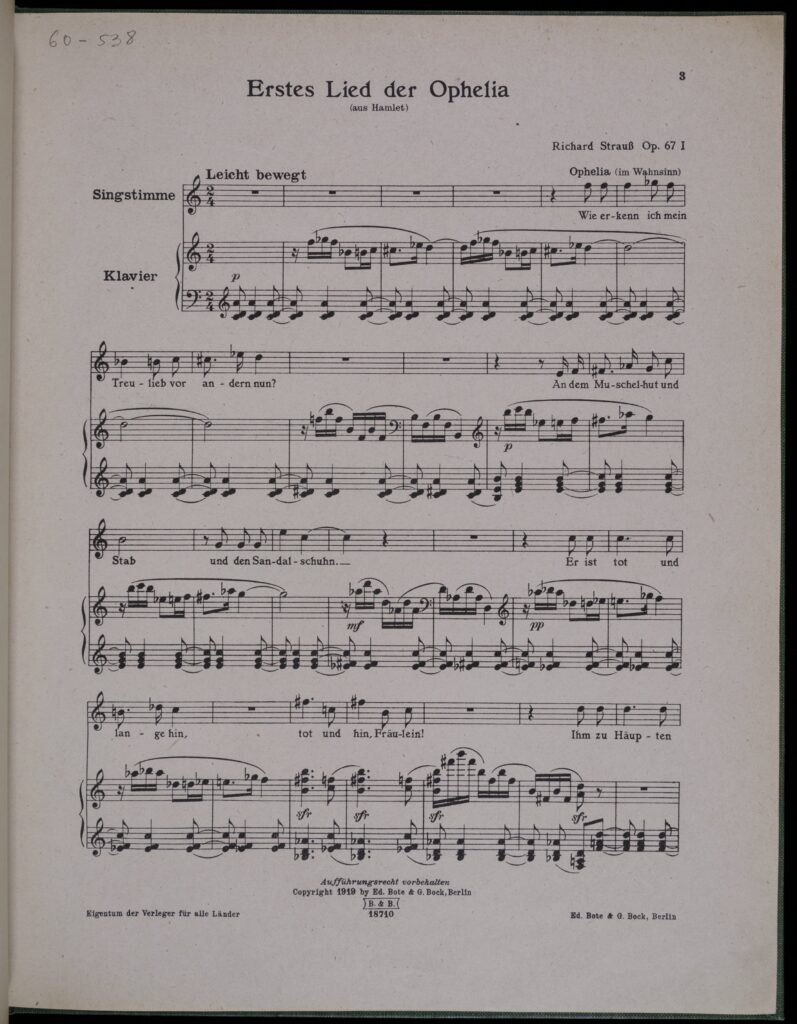
As well, the Newberry has many paths by which one may approach latter-day readers and respondents to Ophelia and other Shakespeare characters that are not editions of the play per se. Included here are a collection of what might be called fan fiction, imagined scenes with various suicides, including a scene of Ophelia’s death that we are not granted in the play by the French writer Charles Nodier (1780-1884). And the great German composer Richard Strauss (1864-1949) provides a twentieth-century imagining of the “old tunes” or “old lauds” that Ophelia might have sung.
Selection: Ophelia Fan Fiction. Charles Nodier, Les Tristes (1806?)
Questions to consider:
- What are some interpretive dimensions of Gertrude’s speech highlighted by earlier and later contexts?
- How much can we read Ophelia’s death as a metamorphosis, one that merges her with the flowers that madly fascinate her in her final scenes on stage?
- How much does Shakespeare’s art reward not just reading, not just staging and performance, but other artistic responses, extending the lives of its characters, or giving a musical response instead of an interpretation?
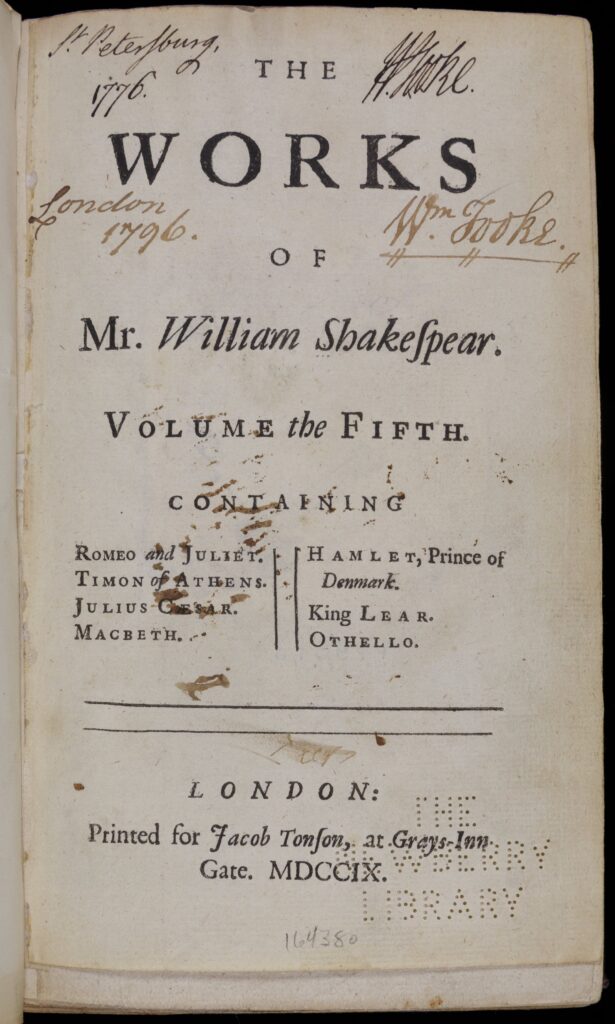
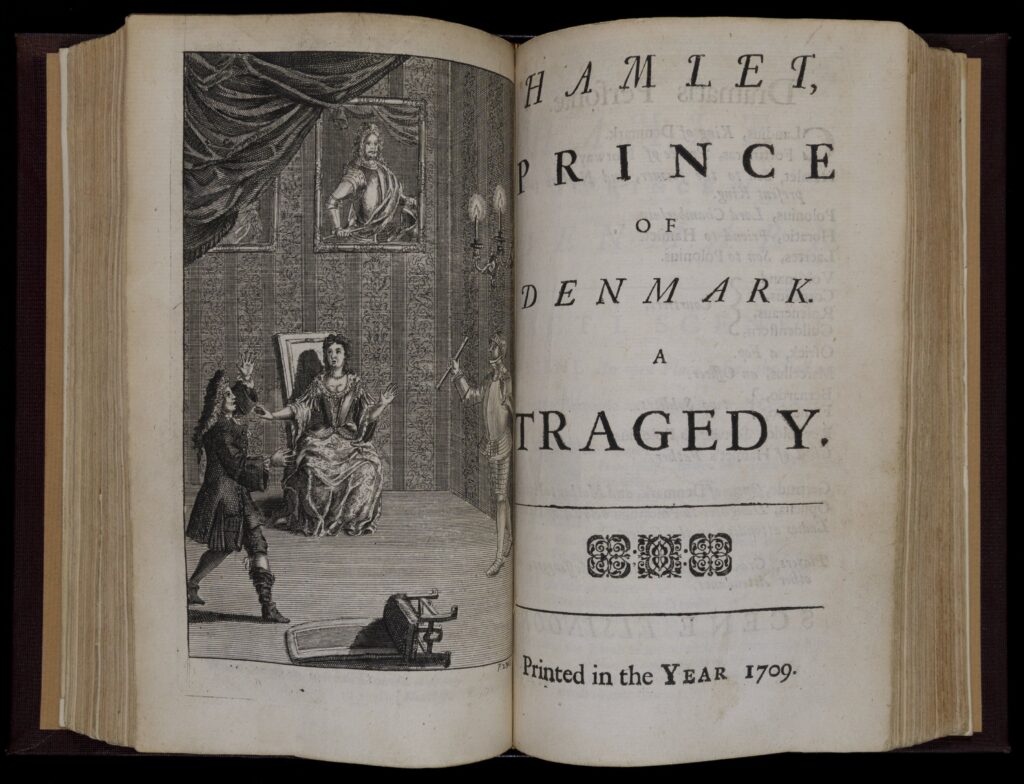
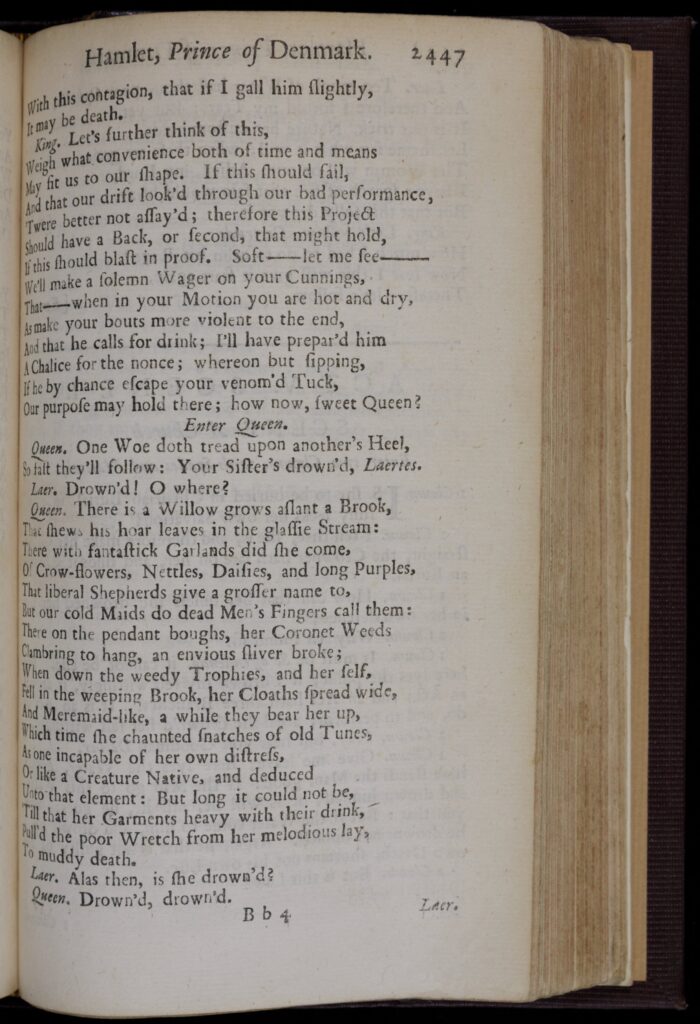
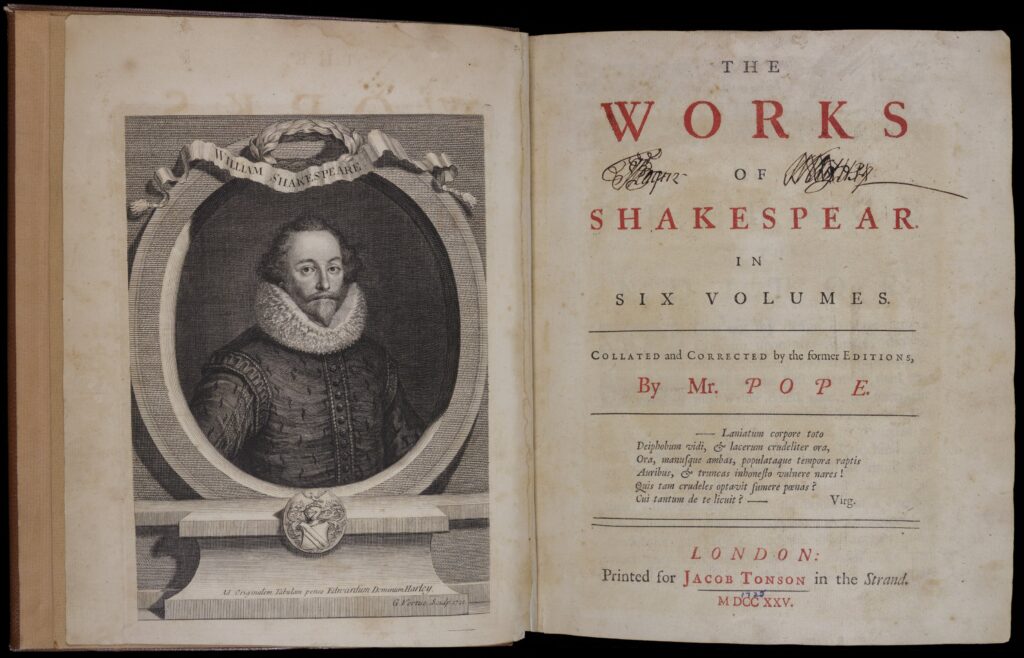
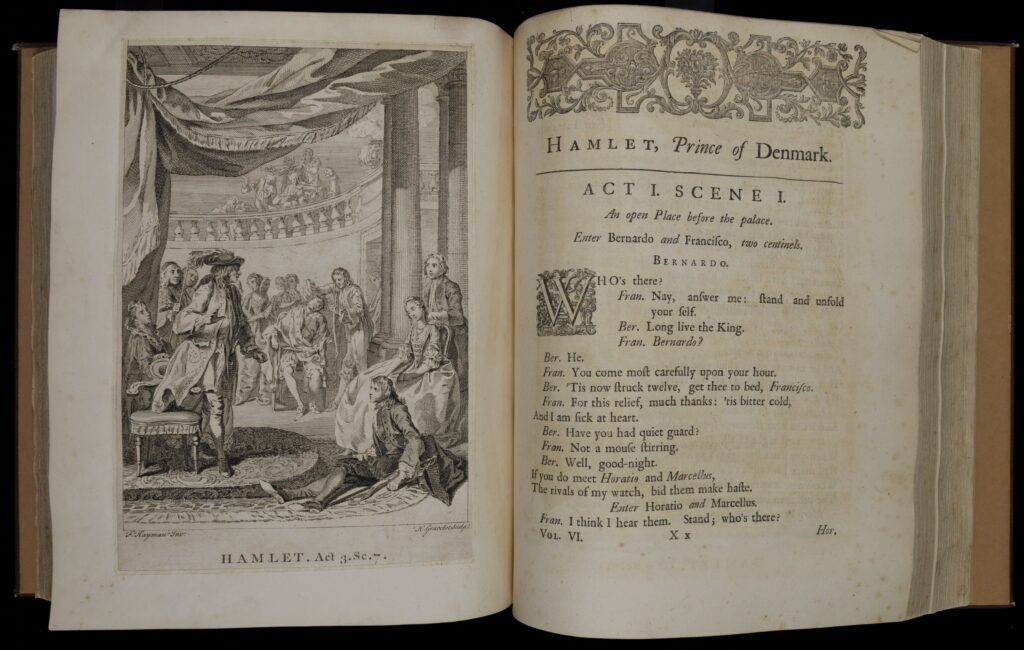
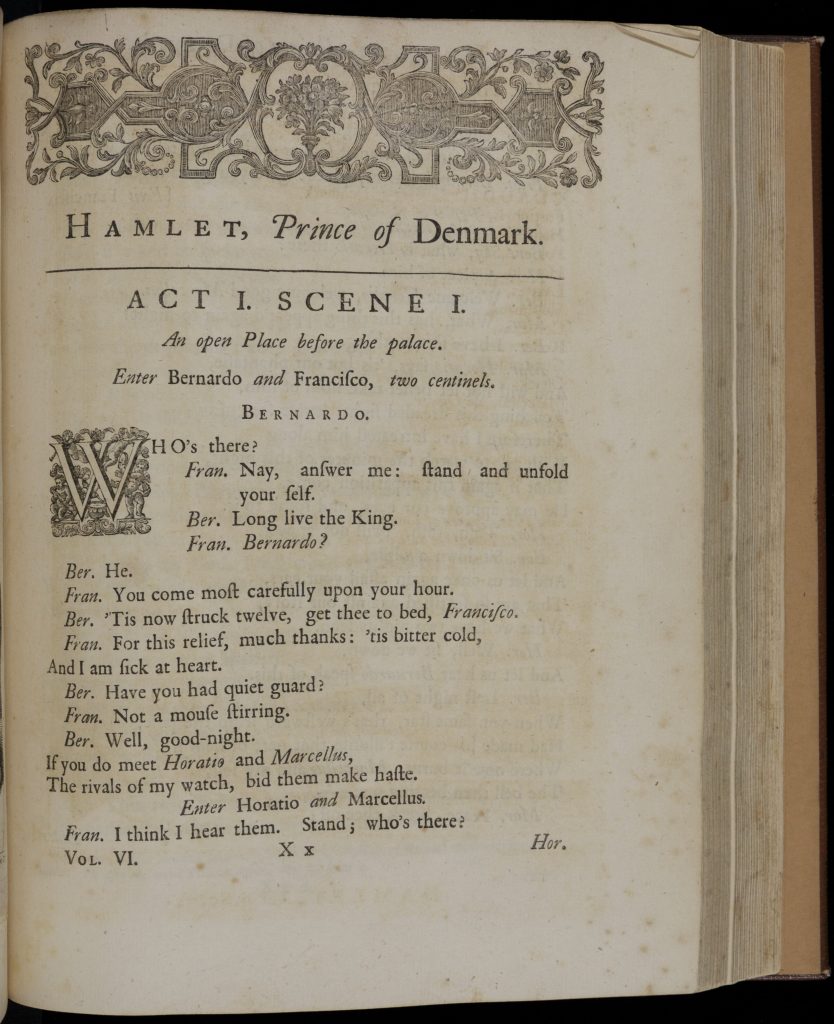

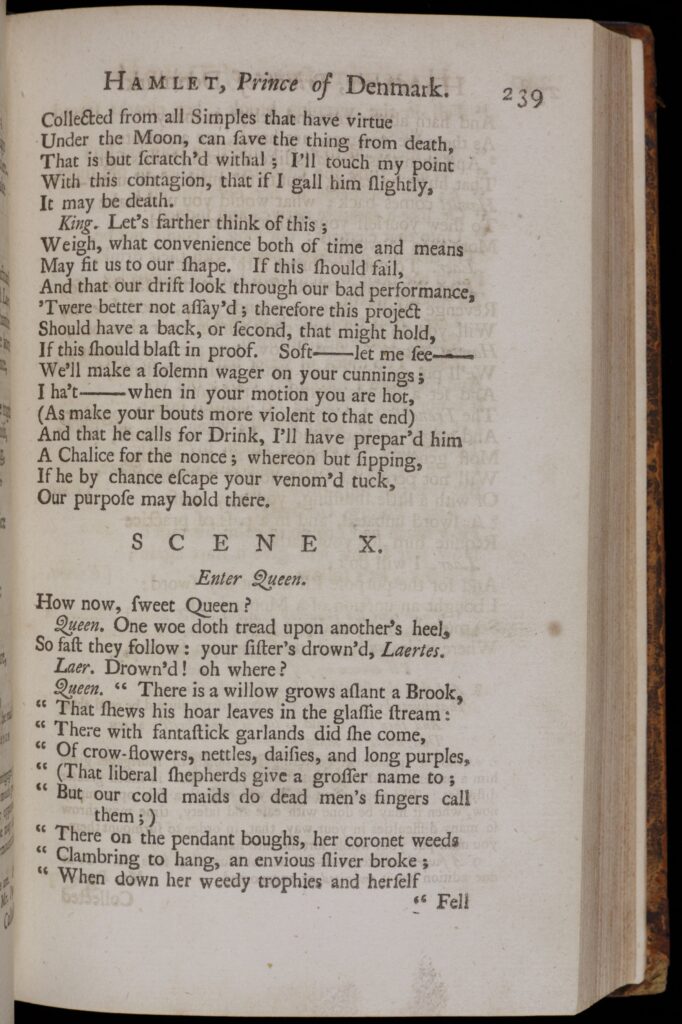
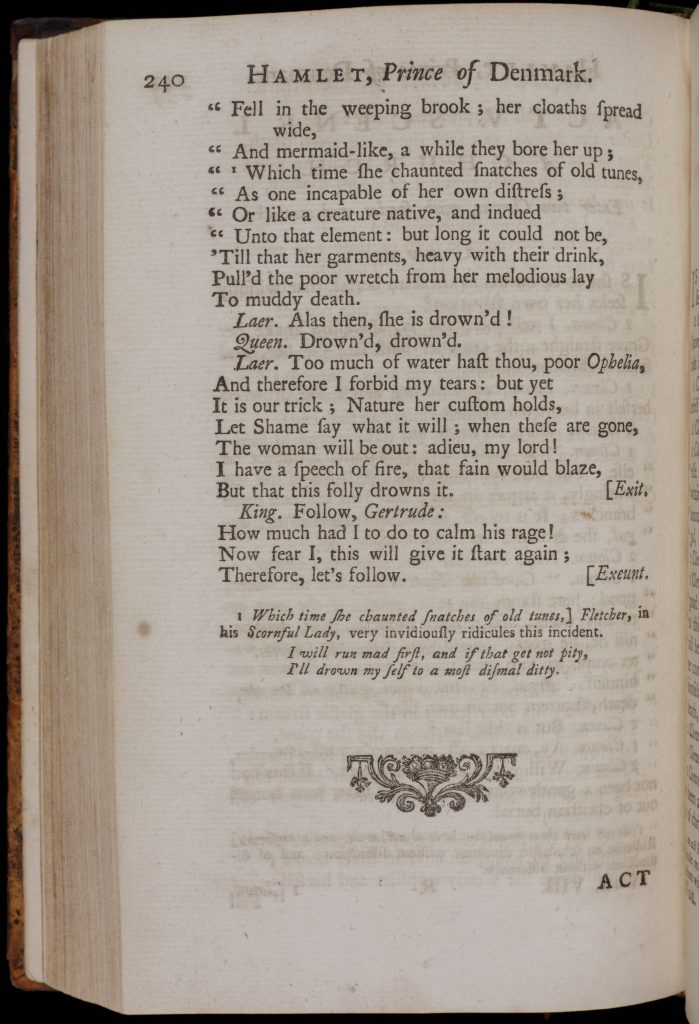
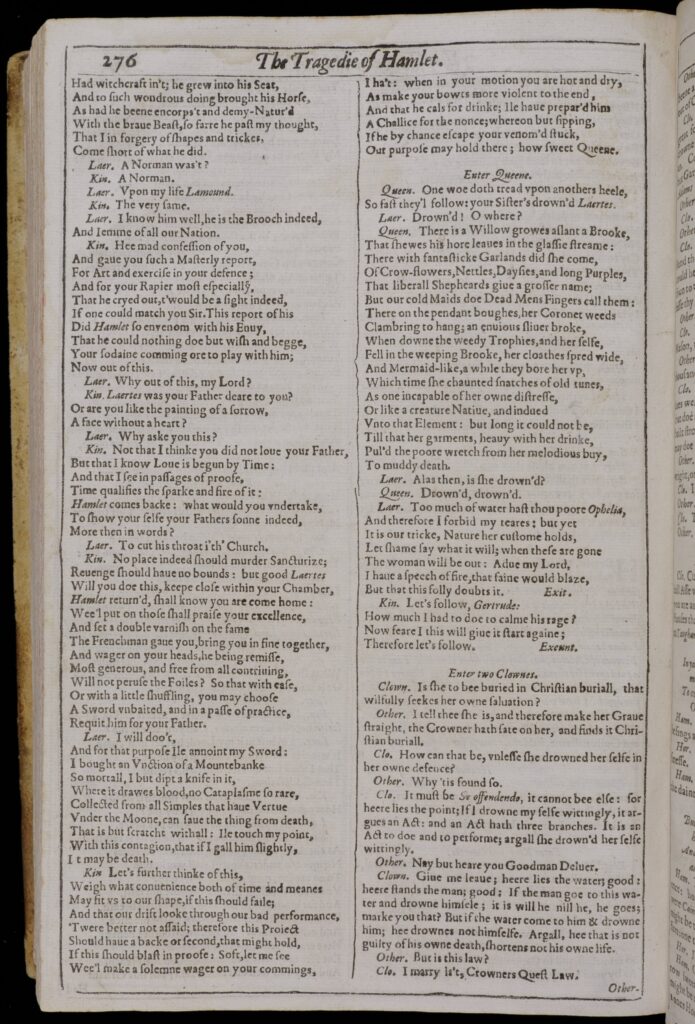

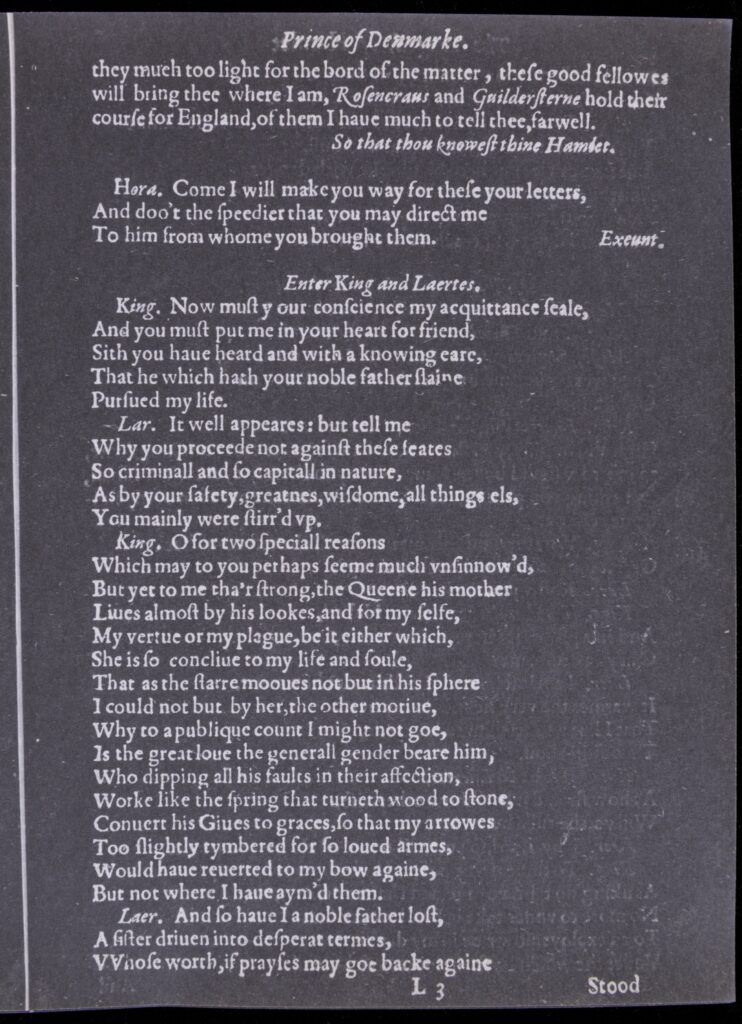
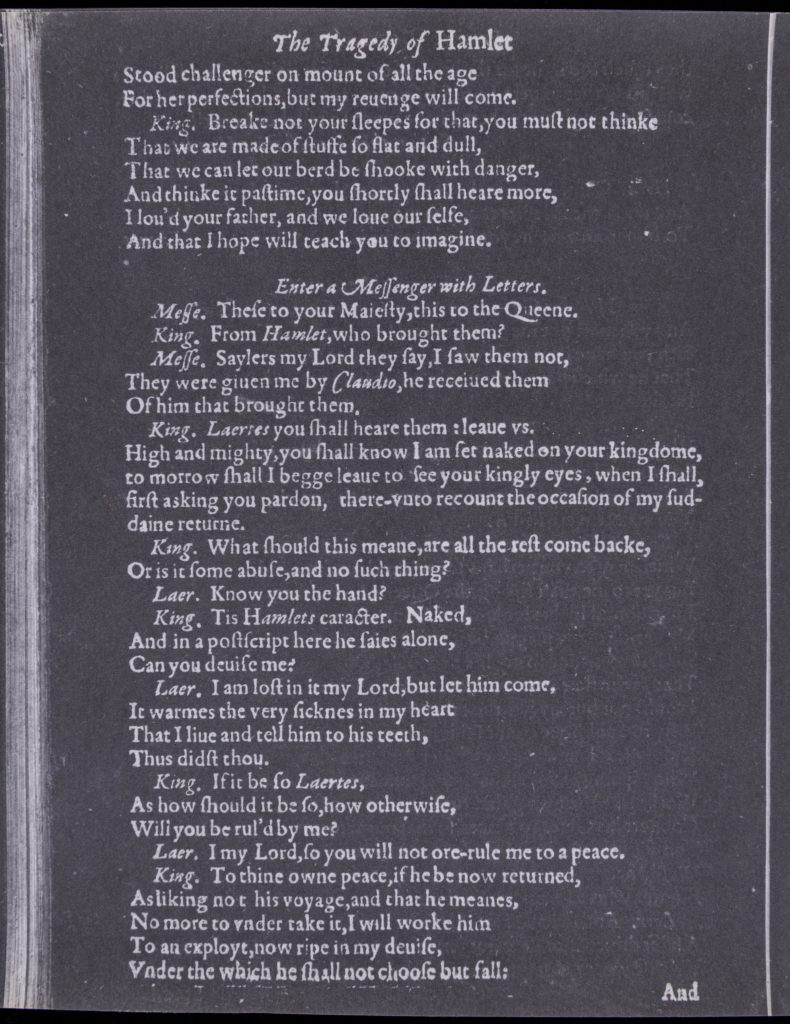



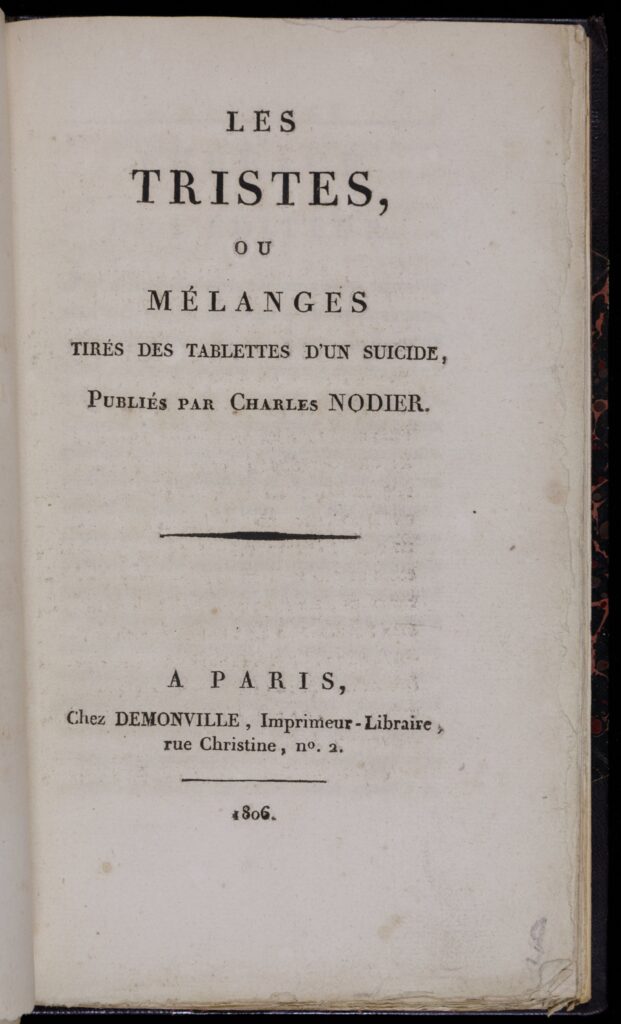
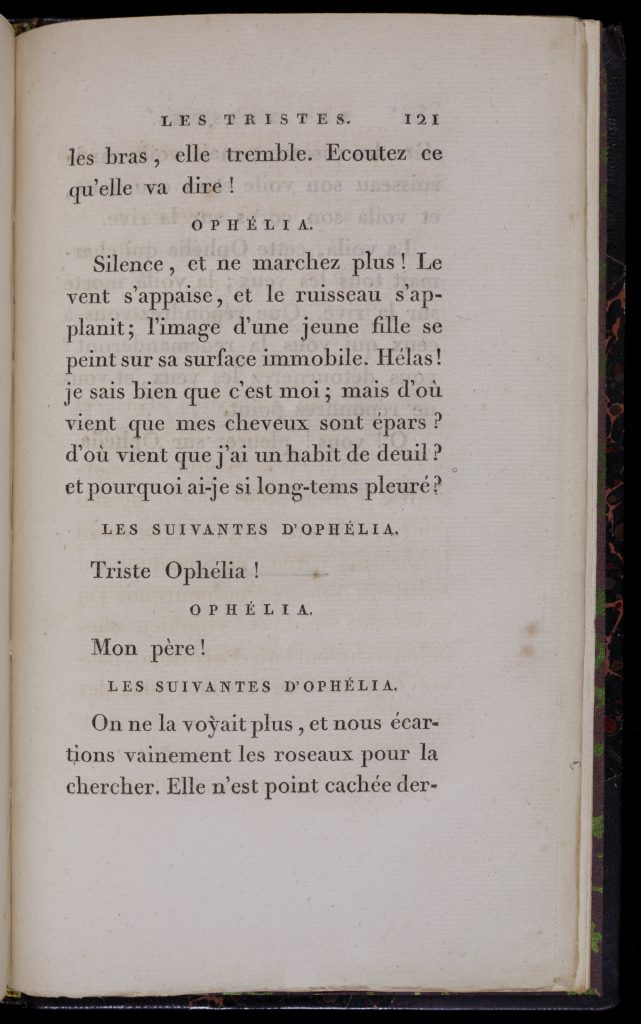

Further Reading
Bate, Jonathan. Shakespeare and Ovid. Oxford: Oxford University Press, 1993.
Benjamin, Walter. “The Work of Art in the Age of Mechanical Reproduction.” In Illuminations: Essays and Reflections, edited by Hannah Arendt, translated by Harry Zohn, 217–51. New York: Schocken Books, 1969.
Grafton, Anthony. The Footnote: A Curious History. Cambridge, Massachusetts: Harvard University Press, 1997.
Lipking, Lawrence. “The Marginal Gloss.” Critical Inquiry 3 (Summer 1977): 609–55.



